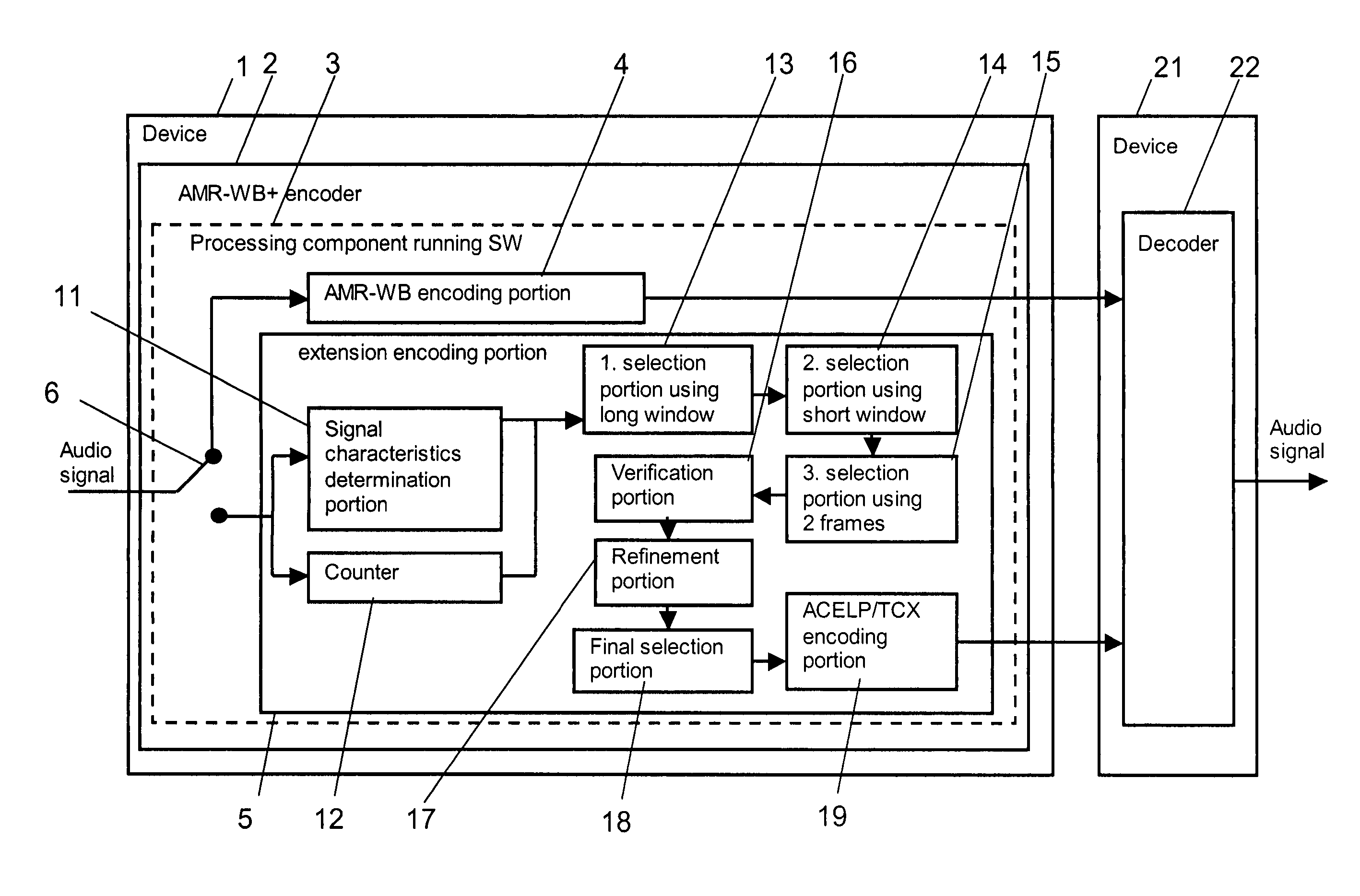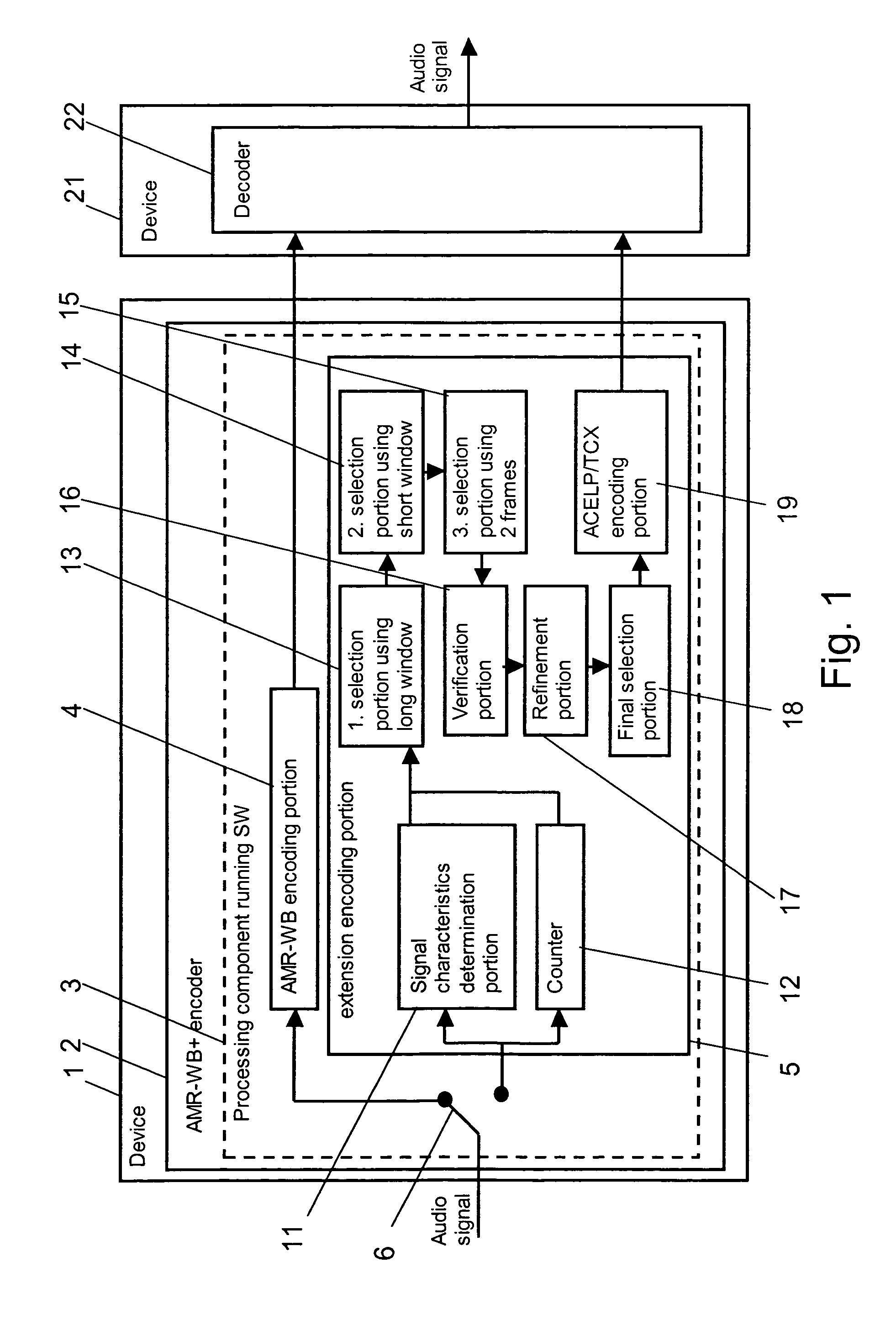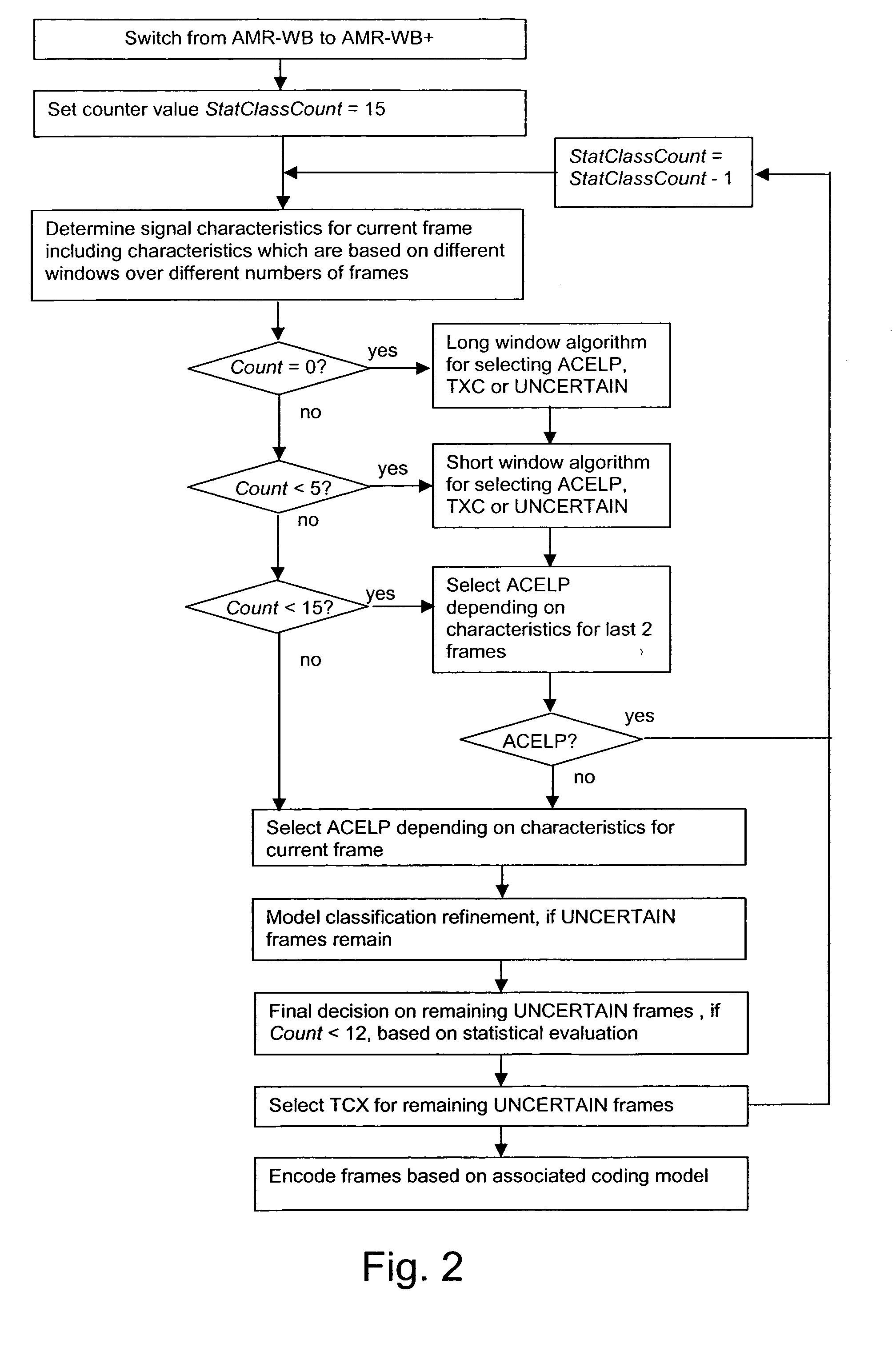Audio encoding with different coding models
a technology of coding models and audio signals, applied in the field of supporting an encoding of an audio signal, can solve the problems of poor performance of speech codecs based on human speech production systems, poor quality of transform coded speech, and poor performance of periodic speech signals, so as to prevent the selection of inappropriate coding models and improve the selection of coding models
- Summary
- Abstract
- Description
- Claims
- Application Information
AI Technical Summary
Benefits of technology
Problems solved by technology
Method used
Image
Examples
Embodiment Construction
[0042]FIG. 1 is a schematic diagram of an audio coding system according to an embodiment of the invention, which allows a soft activation of selection algorithms used for selecting an optimal coding model.
[0043] The system comprises a first device 1 including an AMR-WB+ encoder 2 and a second device 21 including an AMR-WB+ decoder 22. The first device 1 can be for instance an MMS server, while the second device 21 can be for instance a mobile phone or some other mobile device.
[0044] The AMR-WB+ encoder 2 comprises an AMR-WB encoding portion 4 which is adapted to perform a pure ACELP coding, and an extension encoding portion 5, which is adapted to perform a encoding based either on an ACELP coding model or on a TCX model. The extension encoding portion 5 thus constitutes the first coder mode portion and the AMR-WB encoding portion 4 the second coder mode portion of the invention.
[0045] The AMR-WB+ encoder 2 further comprises a switch 6 for forwarding audio signal frames either to ...
PUM
 Login to View More
Login to View More Abstract
Description
Claims
Application Information
 Login to View More
Login to View More - R&D
- Intellectual Property
- Life Sciences
- Materials
- Tech Scout
- Unparalleled Data Quality
- Higher Quality Content
- 60% Fewer Hallucinations
Browse by: Latest US Patents, China's latest patents, Technical Efficacy Thesaurus, Application Domain, Technology Topic, Popular Technical Reports.
© 2025 PatSnap. All rights reserved.Legal|Privacy policy|Modern Slavery Act Transparency Statement|Sitemap|About US| Contact US: help@patsnap.com



